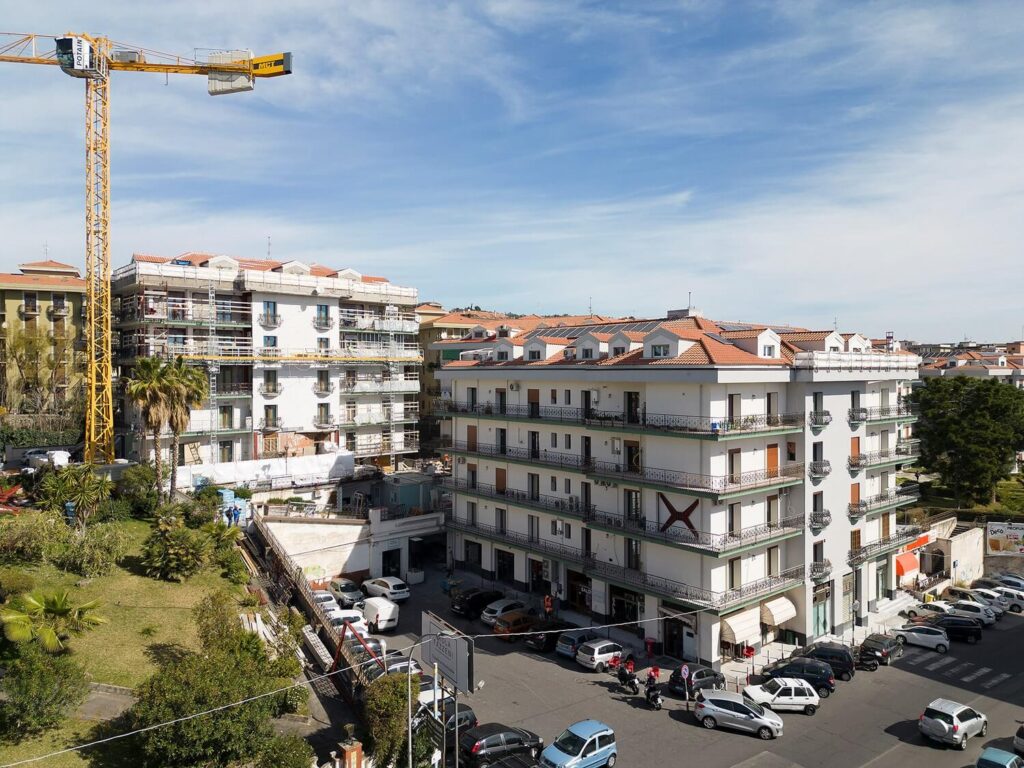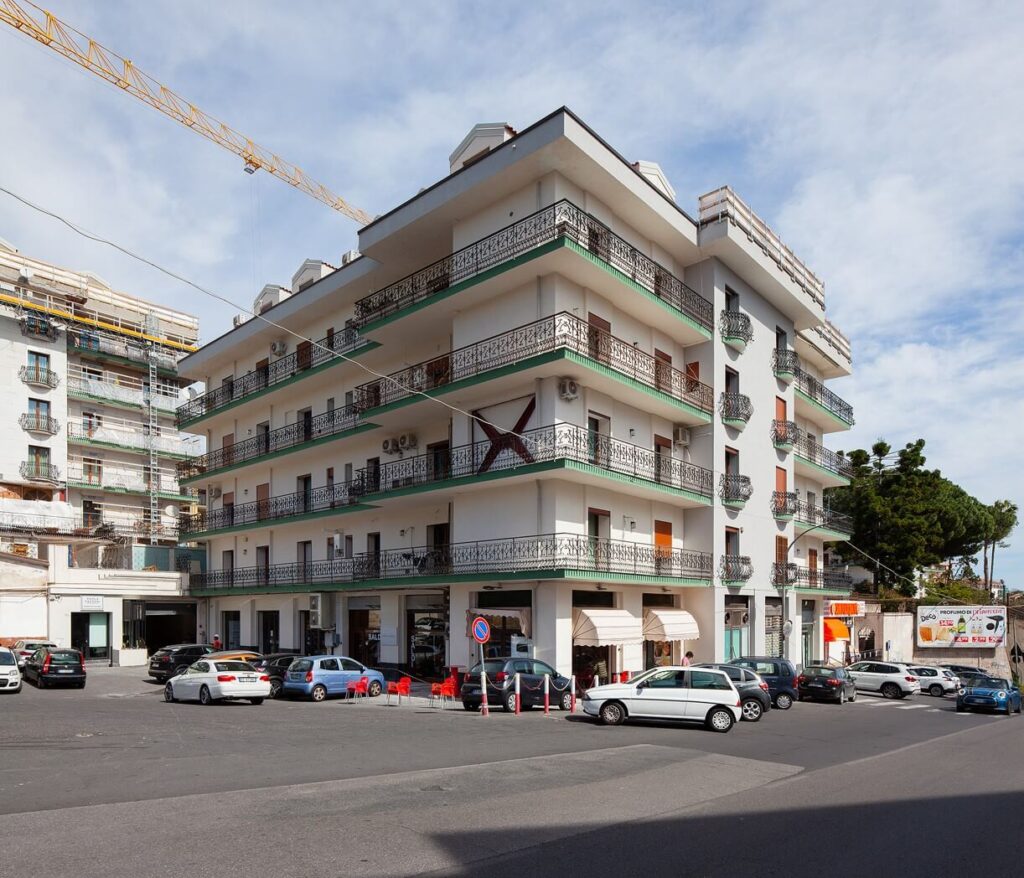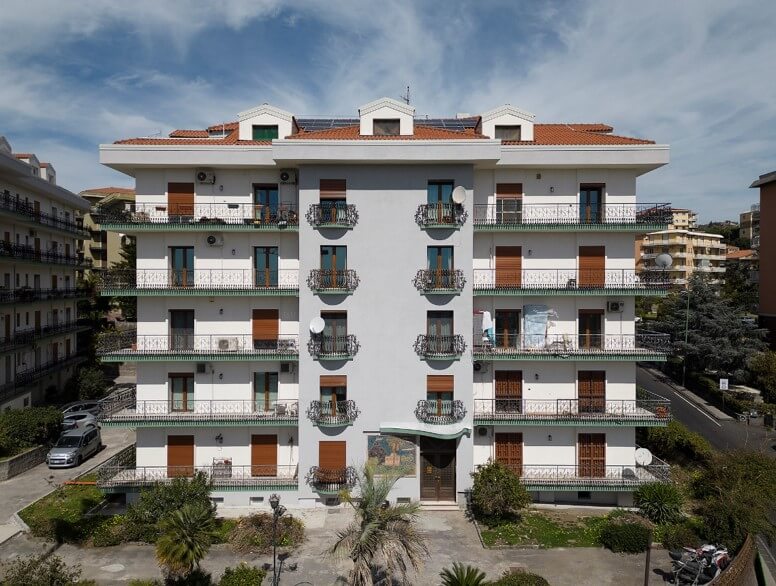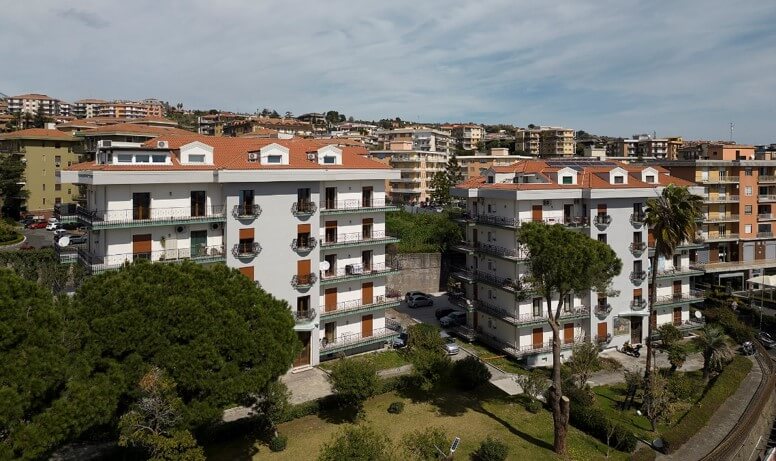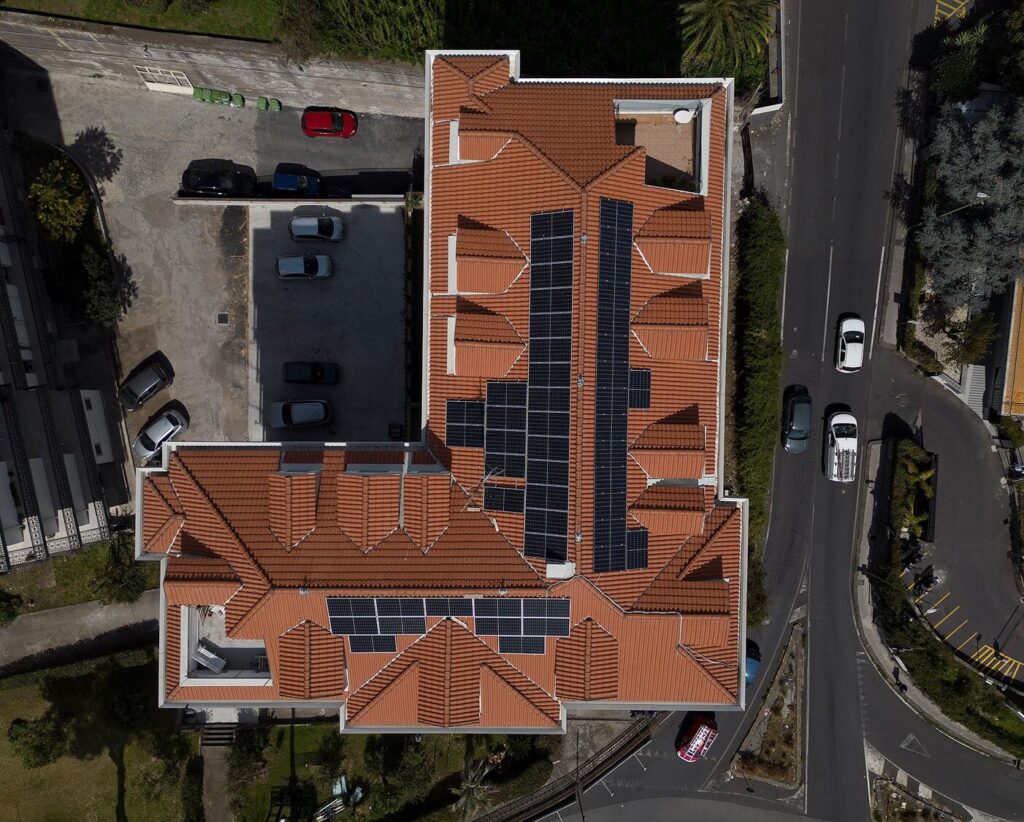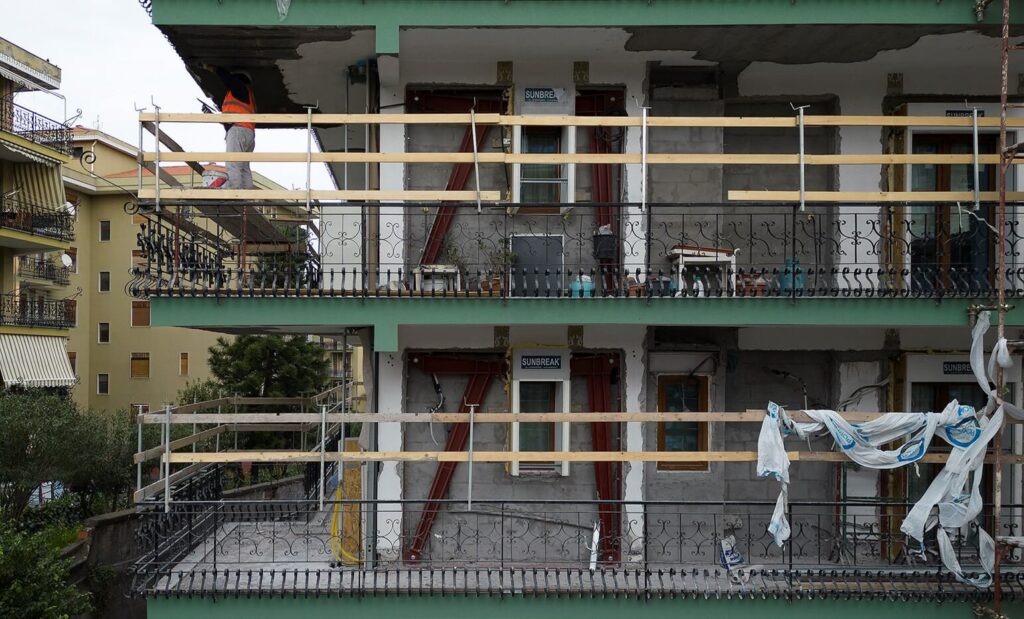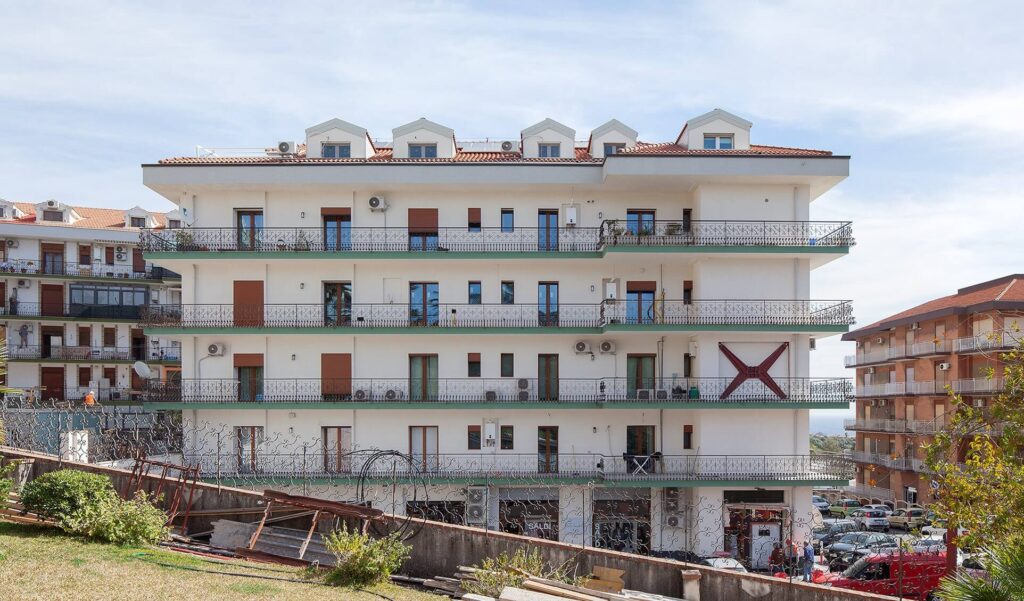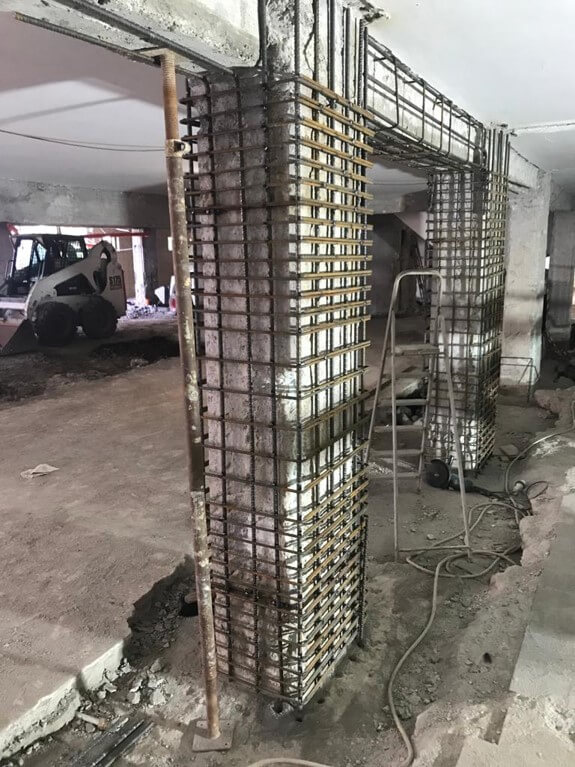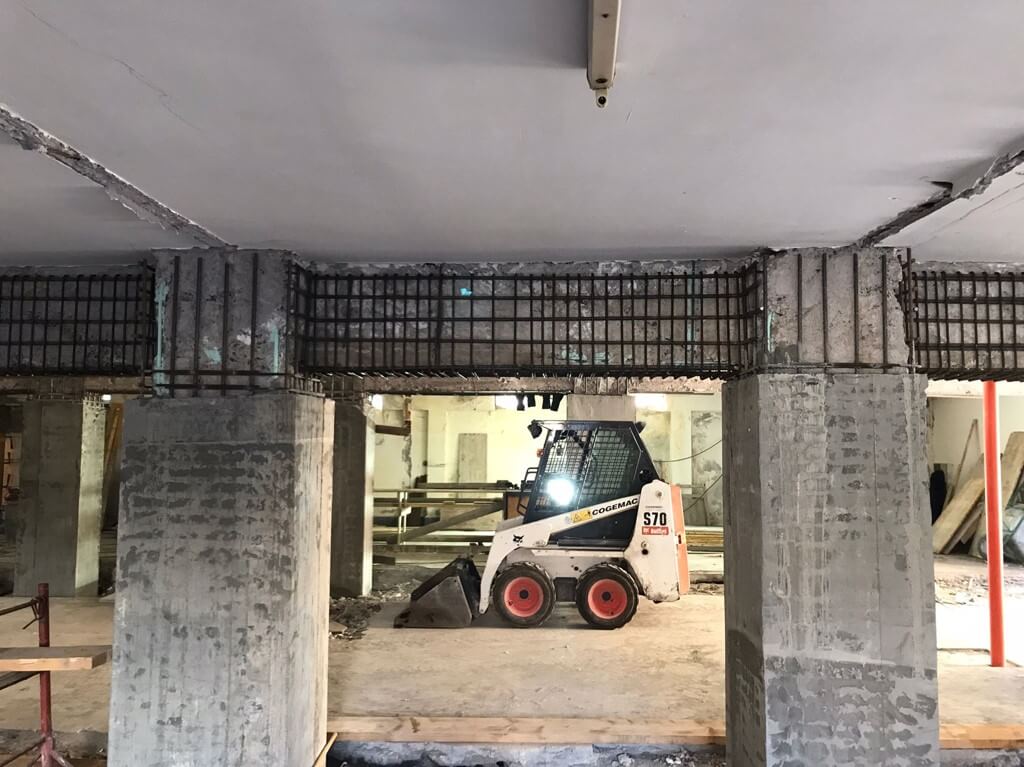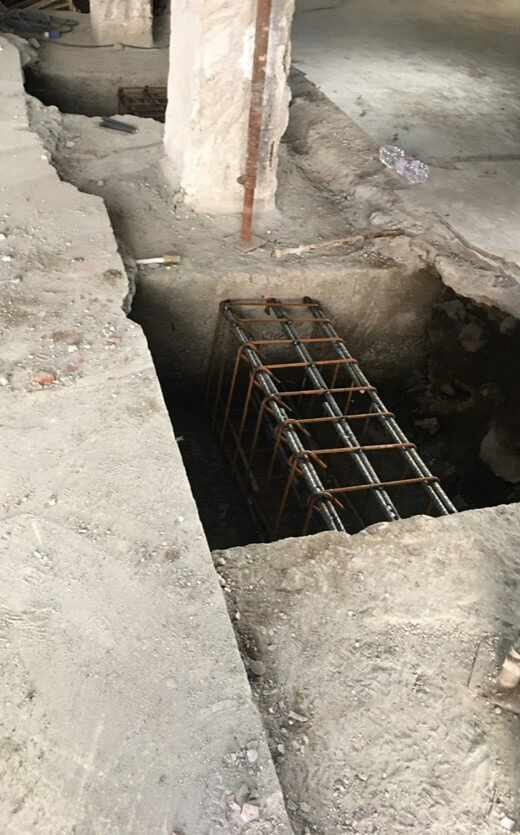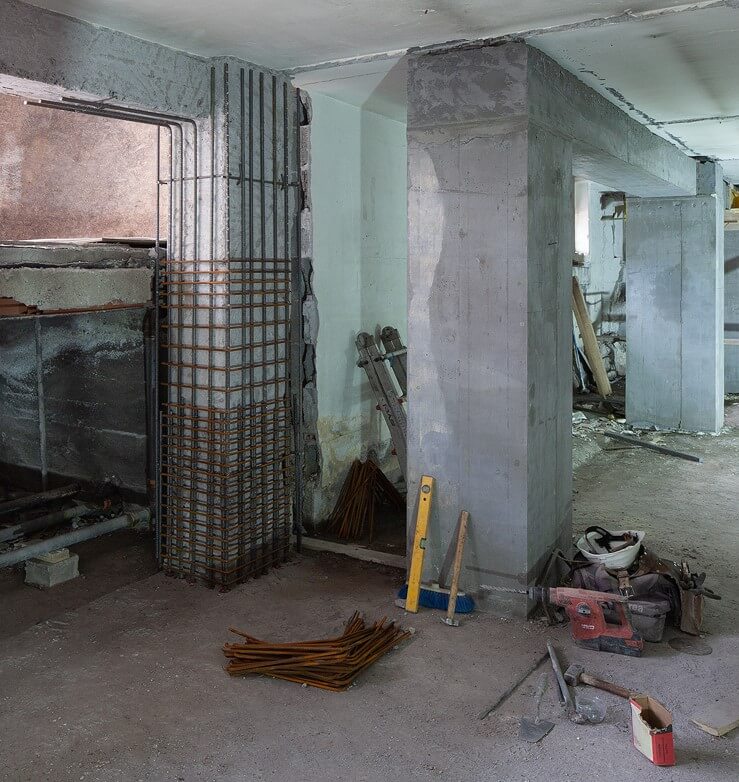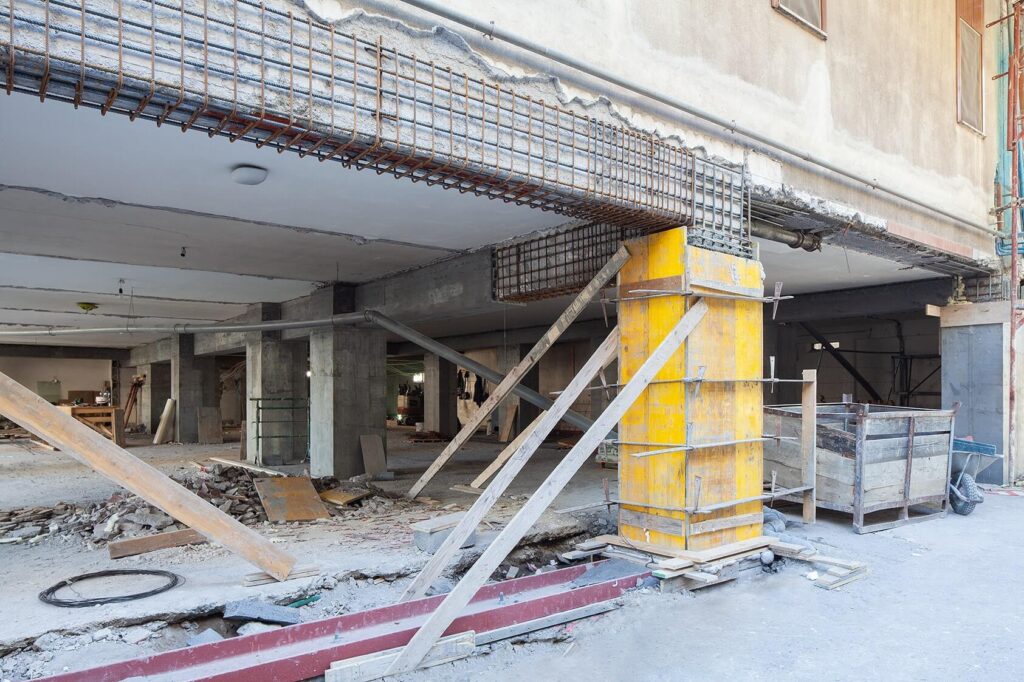The project involved the reduction of the seismic risk of a residential building, built in the 1970s by the company La Palma with the collaboration of Ernesto Stancanelli in the design and structure, consisting of eight buildings in Via Novaluce in Canalicchio. The consolidation project, which benefits from the subsidised measures provided by the 100% Superbonus, involved the Department of Structural and Geotechnical Civil Engineering of the University of Catania. The extremely innovative project involved a widespread intervention on the structure, through which the safety index was raised from the initial 0.20-0.30 points to 0.50-0.60 points, offering a fair compromise, thanks to which the buildings are provided with a better response to a possible earthquake, with possible damage but no collapse, and in any case guaranteeing residents the possibility of evacuating without risk.
Our Intervention
Due to the high seismicity of the city of Catania, we conducted an in-depth study for seismic risk assessment. Our analyses showed that these buildings have considerable vulnerabilities, especially when compared to the characteristics required by today’s regulations in terms of seismic vulnerability (e.g. a safety index between 0.20 and 0.30, well below the required threshold of 0.80). For the securing of the structures of the La Palma residential complex, we designed an intervention differentiated by levels. The first two levels, i.e. the foundations and the garage, were emptied and underwent a deep renovation: given the presence of isolated plinth foundations, which would react unsuitably to an eventual earthquake, we excavated for the insertion of foundation beams and connected them to a common base. We also worked to increase the size of the garage pillars and vertical structures and replaced the non-load-bearing masonry on the outside with load-bearing concrete masonry. These interventions at the base of the building allowed for a significant increase in strength, enabling the structure to react better to possible stresses. On the upper floors, instead, the intervention concerned the perimeter of the building. In particular, we have provided for the installation of dissipative bracing with sacrificial elements (links), which in the event of an earthquake will be the ones that will take on the energy and eventually deform, and then be replaced. Leaving ourselves guided by sophisticated calculation systems obtained thanks to the collaboration project with the University, we alternated this system with steel hooping on all the other frames, to increase resistance without counteracting the seismic force.
Object of intervention
Seismic improvement and energy efficiency work at the ”La Palma” residential complex under the 110% Superbonus
Performances – Stancanelli Russo Associati
Technical-Economic
Feasibility Project
Final Design
Executive Design
Construction Design
Safety Coordination during the design and execution phase
Works Management
Services rendered – Impresa Ernesto Stancanelli srl
Building Site
Construction
As Built
Client
La Palma’ apartment building
Year
2021-2023
Design technology
Building Information Modeling (BIM) e Sismicad.
Photographs
Salvatore Gozzo
Pillole tecniche
Potendo contare su una muratura a doppio foglio, abbiamo minimizzato l’invalidità dell’intervento lavorando sulla fodera esterna dell’edificio, senza intaccare gli interni e permettendo ai residenti di continuare a vivere nelle proprie case.
Abbiamo dunque previsto un intervento di demolizione della fodera esterna, al quale è poi seguita l’aggiunta dei controventi dissipativi o della cerchiatura, poi coperti a secco con l’utilizzo anche di fibra di vetro.
Di concerto agli interventi strutturali, sono stati previsti anche interventi per ottenere una maggiore efficienza energetica, come l’aggiunta del cappotto e la sostituzione degli infissi, oltre che la coibentazione del tetto e l’adeguamento degli impianti.
Gli interventi su cinque delle otto palazzine del complesso residenziale La Palma sono iniziate nel luglio 2021 dall’edificio G. Al momento stiamo per aprire il cantiere per l’edificio H e le tempistiche di realizzazione degli interventi per ciascun edificio si aggirano attorno ai 7 o 8 mesi. Data la presenza di botteghe nei primi livelli di alcuni edifici, nei prossimi mesi provvederemo ad adattare la progettazione alle fattispecie, ma adottando la stessa filosofia d’intervento.


